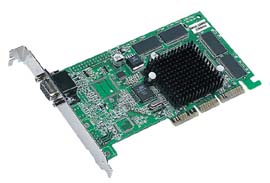
Original Link: https://www.anandtech.com/show/434
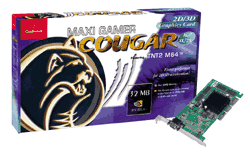 At
the release of the TNT2, a little mentioned variation on the chipset, the TNT2
M64, was simultaneously released. Initially, very little was known about the
chipset, with rumors abounding that it might be a 64MB version of the TNT2.
As it turned out, the 64 stood for a 64-bit memory interface, half as wide as
the 128-bit interface of the full blown TNT2. Recently, AnandTech had a chance
to look at the NVIDIA TNT2
M64 chipset and found that it was a decent budget solution.
At
the release of the TNT2, a little mentioned variation on the chipset, the TNT2
M64, was simultaneously released. Initially, very little was known about the
chipset, with rumors abounding that it might be a 64MB version of the TNT2.
As it turned out, the 64 stood for a 64-bit memory interface, half as wide as
the 128-bit interface of the full blown TNT2. Recently, AnandTech had a chance
to look at the NVIDIA TNT2
M64 chipset and found that it was a decent budget solution.
Guillemot was one of the first on the block with a standard TNT2 and TNT2 Ultra solution and now they're one of the first with a TNT2 M64 product. In fact, they've got two TNT2 M64 products - the standard Maxi Gamer Cougar and the Maxi Gamer Cougar Video Edition. With the Video Edition, Guillemot hopes to go head to head with ATI's All-in-Wonder series and Matrox's Marvel series. Today, we're just taking a look at the standard Cougar.
Card Specifications
(courtesy NVIDIA/Guillemot)
Specifications
- 125 MHz 128-bit 2D/3D core
- 2nd Generation 128-bit TwiN Texel architecture
- 250 Megapixels per second
- 9 Million Triangles per second peak processing power
- Resolution support up to 2046 x 1536
- PCI/AGP Support – AGP 2X/4X Texturing Support
- 16/32-bit 3D Rendering Support
- 32-bit Z/stencil Buffer
- 300MHz Integrated RAMDAC
- 16/32MB 64-bit SDRAM
- 2048 x 2048 Texture Support
- Optional NTSC/PAL Video Out
- Optional Digital Flat Panel Output
- Direct3D/OpenGL API Support
- OpenGL ICD for Windows 9x, NT 3.5x, NT 4.0, and Windows 2000
The Card
NVIDIA's reference design is the basis for the Maxi Gamer Cougar PCB. In the case of the TNT2 M64, that means quite a small PCB, especially when compared with the full blown TNT2. Only four memory chips are necessary to fill the 64-bit memory bus, allowing the PCB to be smaller and cheaper. Even though the board is much smaller, there is still room on the board for TV-out and digital flat panel connectors and chips; however, it’s very unlikely that any manufacturers will be pursuing such options. A PCI version is also available.
The Cougar follows the NVIDIA recommended spec of 125/150 core/memory clock using a standard passive heatsink attached by spring clips and heatsink compound. SDRAM is of the 7ns variety from Mosel Vitalic on our sample.
The NVIDIA spec has merely served as a "recommendation" since the introduction of the TNT2. Guillemot was one of the first companies to push beyond that recommendation with their Maxi Gamer Xentor 32 that ran at 175/183, one of the fastest on the market. Since the Cougar isn't aimed at the hardcore gaming market, it's no surprise that Guillemot chose not to push things in the interests of keeping costs down.
Nevertheless, we pushed on and found that our Cougar evaluation sample would run at 155/170, offering quite a nice performance boost. This performance increase is without any additional cooling and it would be simple enough to add a fan atop that passive heatsink to possibly push things further. As always when overclocking, results will vary.
Generally, the 2D image quality of the TNT2 M64 is fine at resolutions up to 1280 x 1024, but at 1600 x 1200 the image quality makes a small, but noticeable drop.
The Cougar is also available in a "Video Edition" that, as the name implies, offers video in and out features in addition to the standard Cougar we have here. Since it's based on the same TNT2 M64 chip, expect the Cougar Video Edition to compete with the original ATI All-in-Wonder 128 from a 3D performance stand point, but fall behind the Marvel G400 and Voodoo3 3500 on that front. We won't comment on its video capture abilities until we're able to get a hold of an evaluation sample.
For full details on the TNT2 M64 chipset features, specifications, and performance see our NVIDIA TNT2 M64 Review.
Drivers
Guillemot slaps their logo on the NVIDIA reference drivers with no other significant changes to arrive at their driver solution. Fortunately, with NVIDIA behind the actual driver code, this isn't a bad thing at all. That means solid OpenGL support and Direct3D under Windows 9x and the upcoming Windows 2000. Support for OpenGL under Windows NT 4 is also among the best. Alternative OS’s, such as Linux and BeOS, are also well supported.
At the moment Guillemot has only released a driver set based on the 2.40 NVIDIA drivers, while NVIDIA has reference drivers up to version 3.53. Since Guillemot hasn't made any major modifications, no features will be lost by going with the NVIDIA reference set.
Driver Pictures
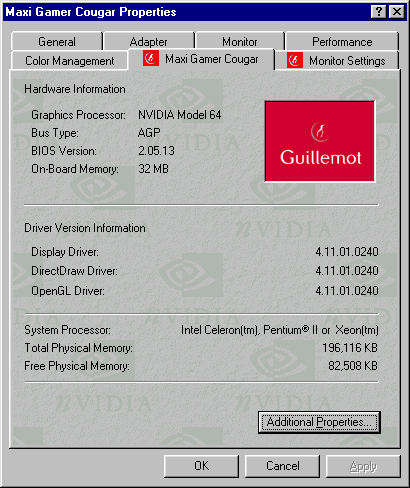
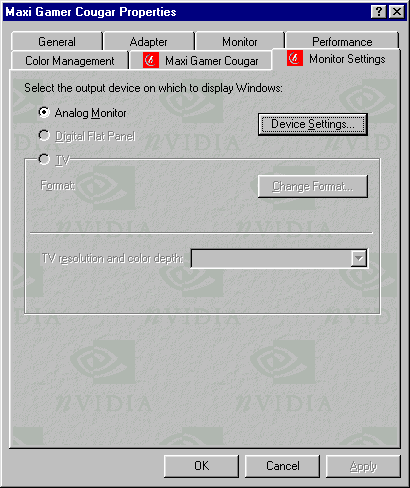
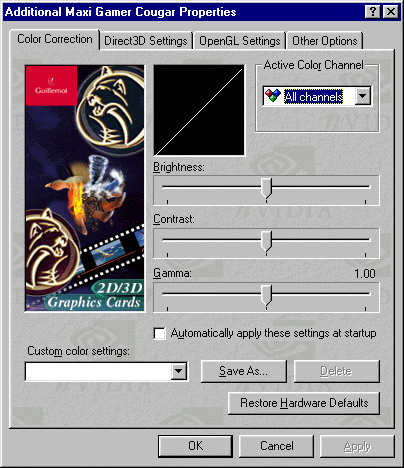
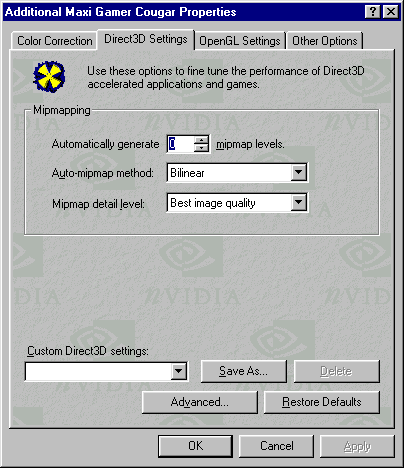
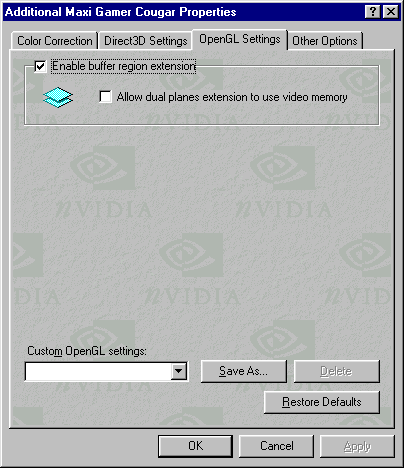
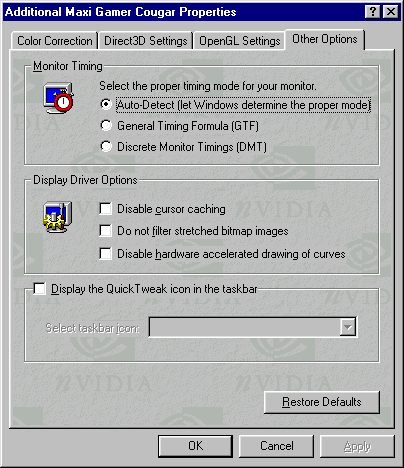
Performance
As we found with the TNT2 and TNT2 Ultra cards, the TNT2 M64 performance varies very little from card to card as long as the clock speeds are the same. With that in mind, there's no reason to reinvent the wheel and repost all the benchmarks here. For full details on the TNT2 M64 performance, including comparisons to the full fledged TNT2, see our NVIDIA TNT2 M64 Review and our Fall 1999 Budget Video Comparison.
Final Words
In our Fall 1999 Budget Video Comparison, we came to the conclusion that the 3dfx Velocity was the best buy for a budget video card if you could live without features such as 32-bit rendering, large texturing support, and AGP texturing. If you must have those features, the TNT2 M64 is certainly a viable alternative and the Maxi Gamer Cougar is one of the most widely available TNT2 M64's. Throw in a $20 rebate that brings the price as low as $75 and the Cougar offers a good budget solution for those desiring such advanced rendering features.

